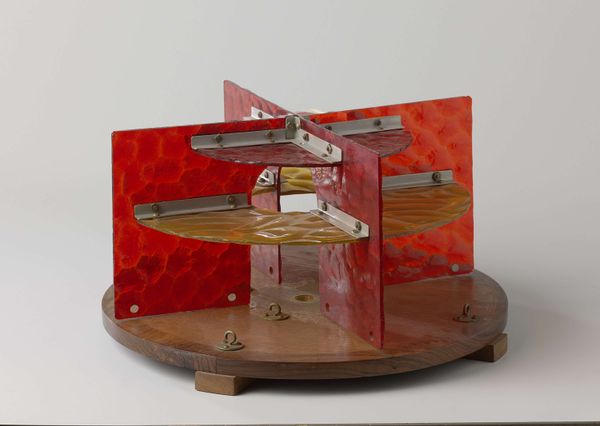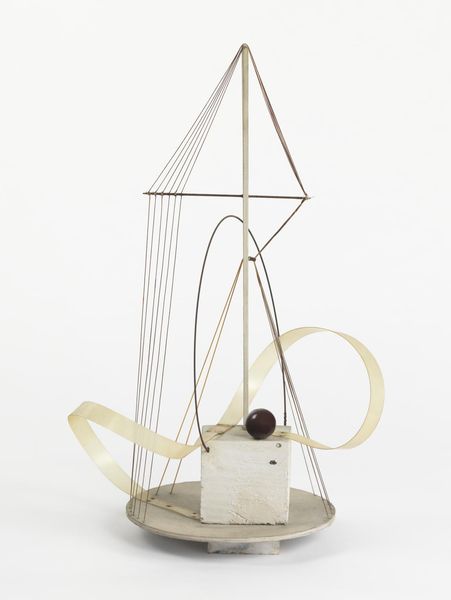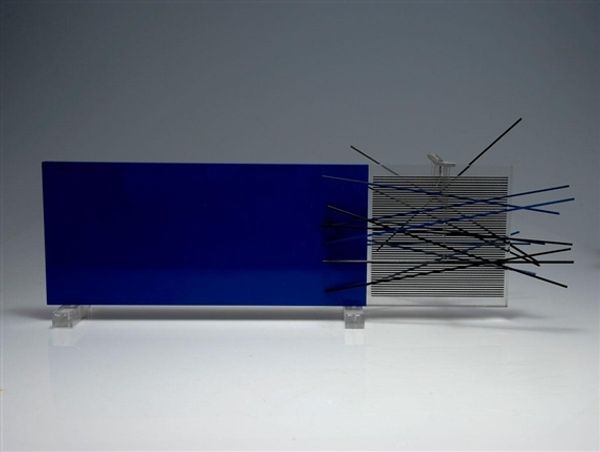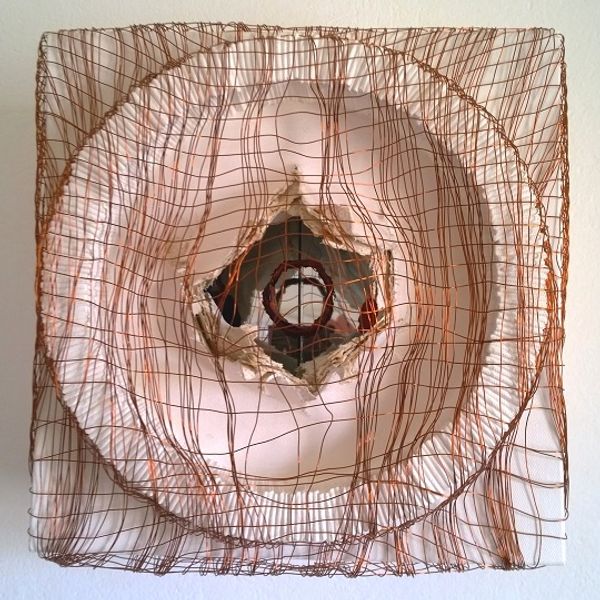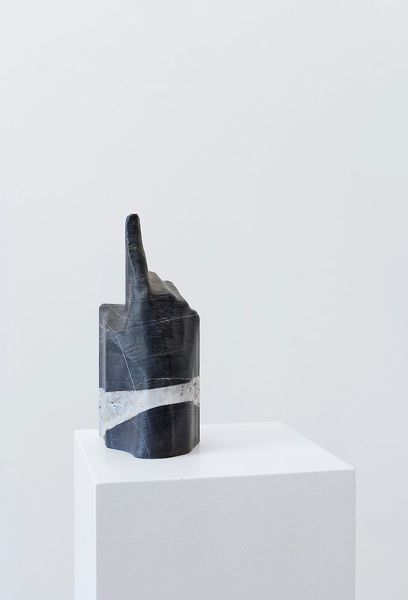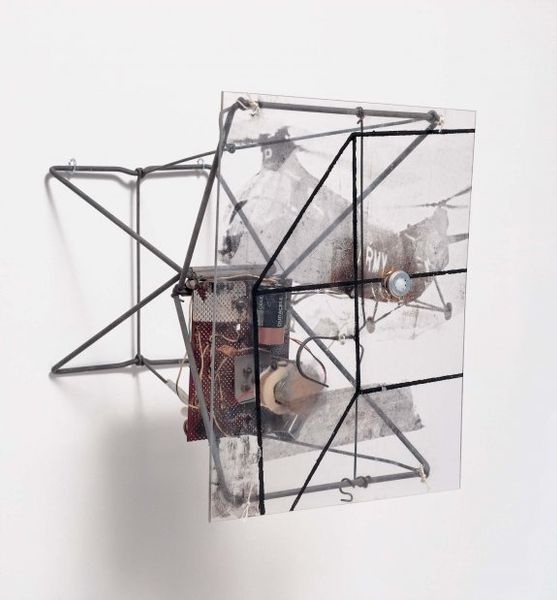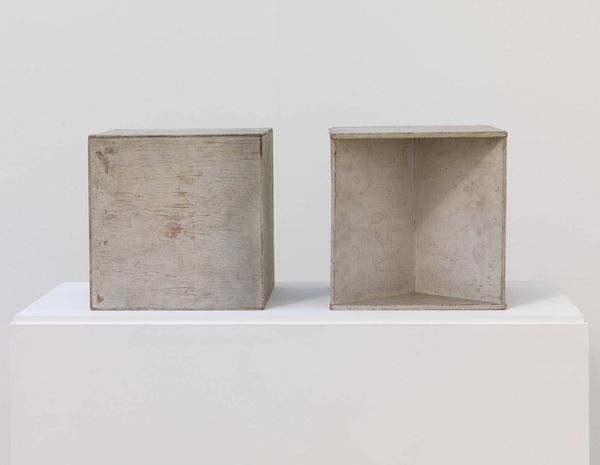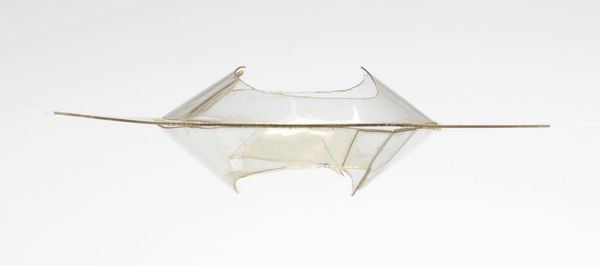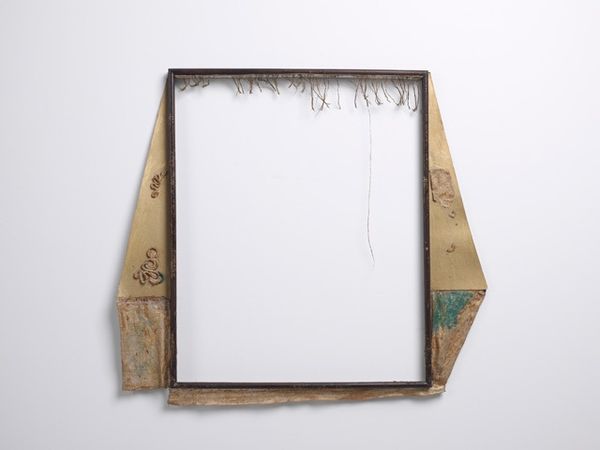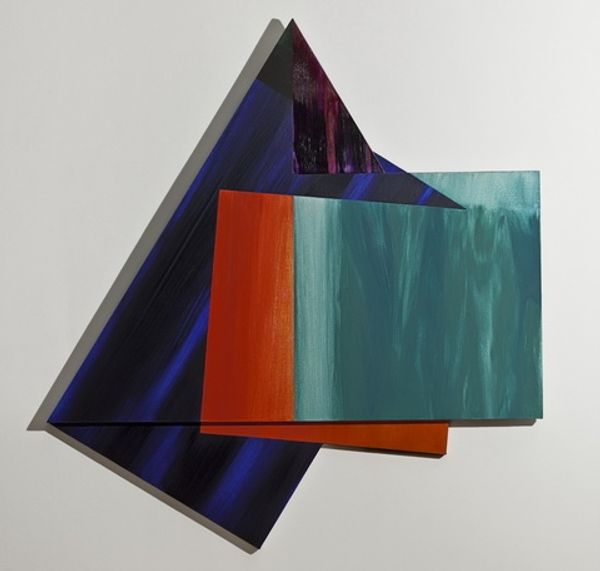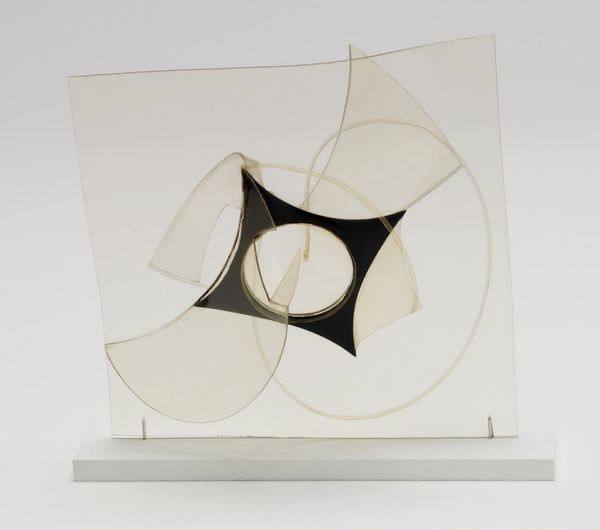
Dimensions: displayed: 350 x 255 x 380 mm
Copyright: © Lucas Samaras | CC-BY-NC-ND 4.0 DEED, Photo: Tate
Curator: Here we have Lucas Samaras's "Box" from the Tate collection, a mixed media sculpture of modest dimensions. What are your first impressions? Editor: Ominous, certainly. The mirrored surfaces offer a distorted reflection, while the bristling pins suggest threat. It has a powerfully unsettling presence. Curator: Indeed. The box form itself, with its lid slightly ajar, suggests secrets, while the pins evoke associations with pain and even fetishism. It's a container of hidden and potentially dangerous meanings. Editor: Absolutely, and the composition reinforces that tension. The contrast of the smooth, reflective surfaces with the rough texture of the pins is quite striking. The colorful threads extending out from the top add another layer of complexity. Curator: Those threads could symbolize connection or conversely, the unraveling of something whole. Overall, it’s a work that speaks to the anxieties and hidden desires of the modern psyche. Editor: And formally, the interplay between texture and reflection is endlessly fascinating; this piece really activates the gallery space. Curator: It does. A powerful object lesson in how art can be both beautiful and deeply disturbing. Editor: It leaves one with much to consider about the nature of art and human experience.
Comments
Join the conversation
Join millions of artists and users on Artera today and experience the ultimate creative platform.
tate 8 months ago
⋮
Samaras began making boxes using found objects and materials in the early 1960s. His father was a shoemaker and, as a child, Samaras often played in his aunt’s dress shop: ’The pin is to an extent a part of the family’, he once said, referring to the frequent use of pins in his work. His boxes frequently contain both soft and sharp materials. Here shards of glass both repel and attract. Samaras has said, ’this force to touch or not touch, destroy or caress, has always been with me’. Gallery label, August 2004
